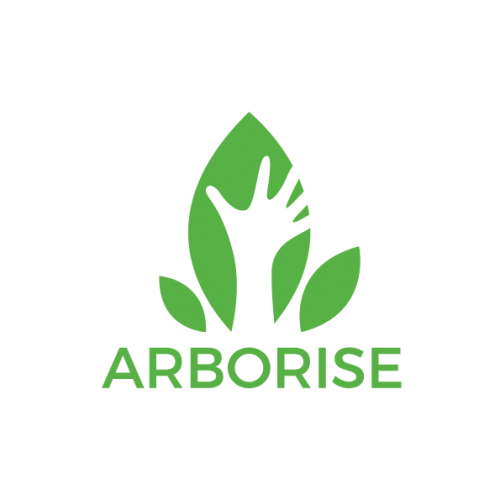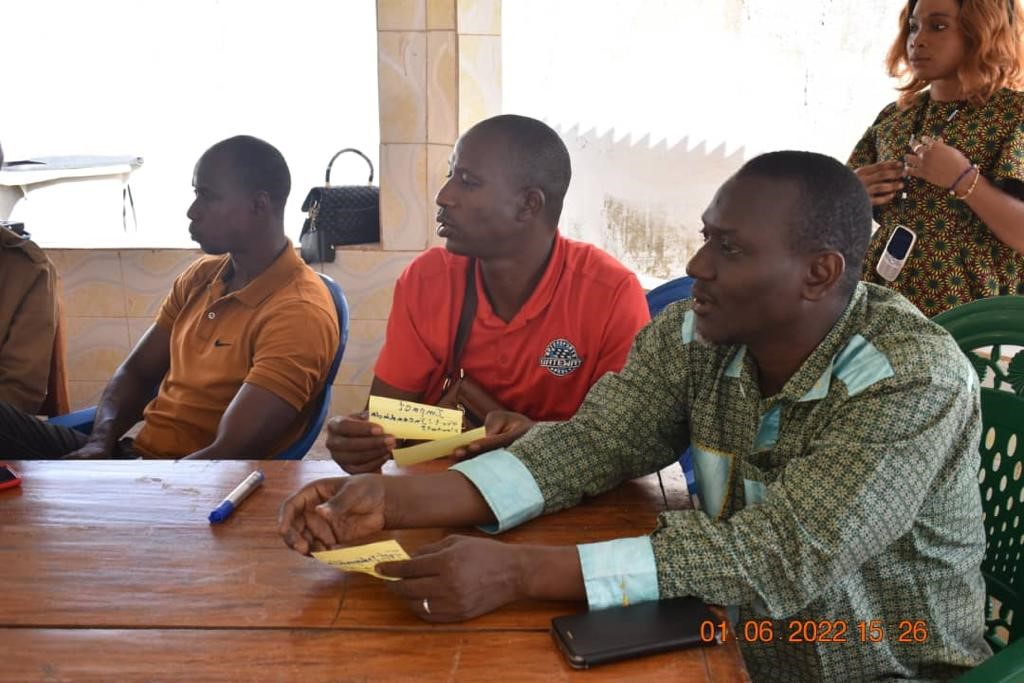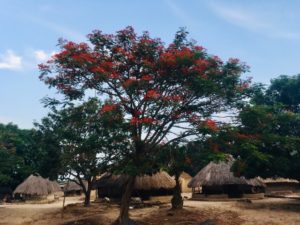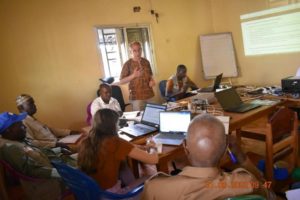Since the implementation of our project in the Linko region is going well, we are considering extending our project to the neighbouring Beyla Prefecture. We are therefore starting a two-day prospection to check that the social and environmental conditions are similar to those in the Linko sub-prefecture and that our method can be applied there in the same way.
Our exploration will take us to the capital of the sub-prefecture of Karala. On this map, we can see the Ivorian border to the north-east, but even without obstacles, we can easily triple the time indicated by Google Maps:


But our route is full of pitfalls, starting with a tree trunk across the road, following the violent storm of the previous night:
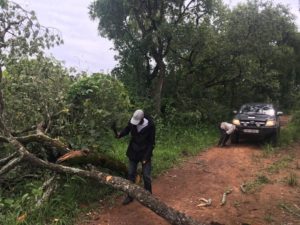



Then we cross the Dion river, a tributary of the Niger river.
Then, just before nightfall, our vehicle refuses to continue, and this in the middle of the bush! A mechanic and an electrician have to be brought in from Samana (35 km away) to find the cause of the breakdown. These two gentlemen are not only examples of customer orientation but also true repair artists!


…Just after leaving, this is what we find 20 km from our destination:
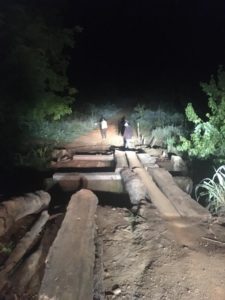

..fortunately, it was possible to ford the river, and we arrive in Karala at about 11 pm.
Hospitality is not an empty word in Guinea as the Mayor, whom we probably woke up, immediately opens the town’s Maison d’Accueil for us for the night, where rooms, which can be described as luxurious, await us.
The next morning we explained our approach and the arboRise method to the Sub-Prefect, the Mayor and the head of Water and Forests of the Karala sub-prefecture, who undertook to provide us with a list of potentially interested villages.
The return from the borders of Guinea (Karala is 50km from the Ivorian border) went well and confirmed the suitability of this region for our project (same types of trees, same development conditions, etc.). We can now plan a more detailed concept.
Just before Linko, a shock absorber breaks and the women farmers who were ploughing the next field come to shake our hands, long live the Guinean kindness!
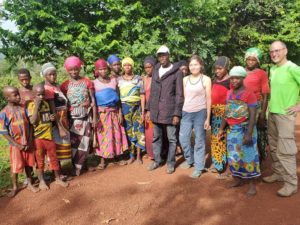

It is on this fraternal image that our prospection mission ends.
